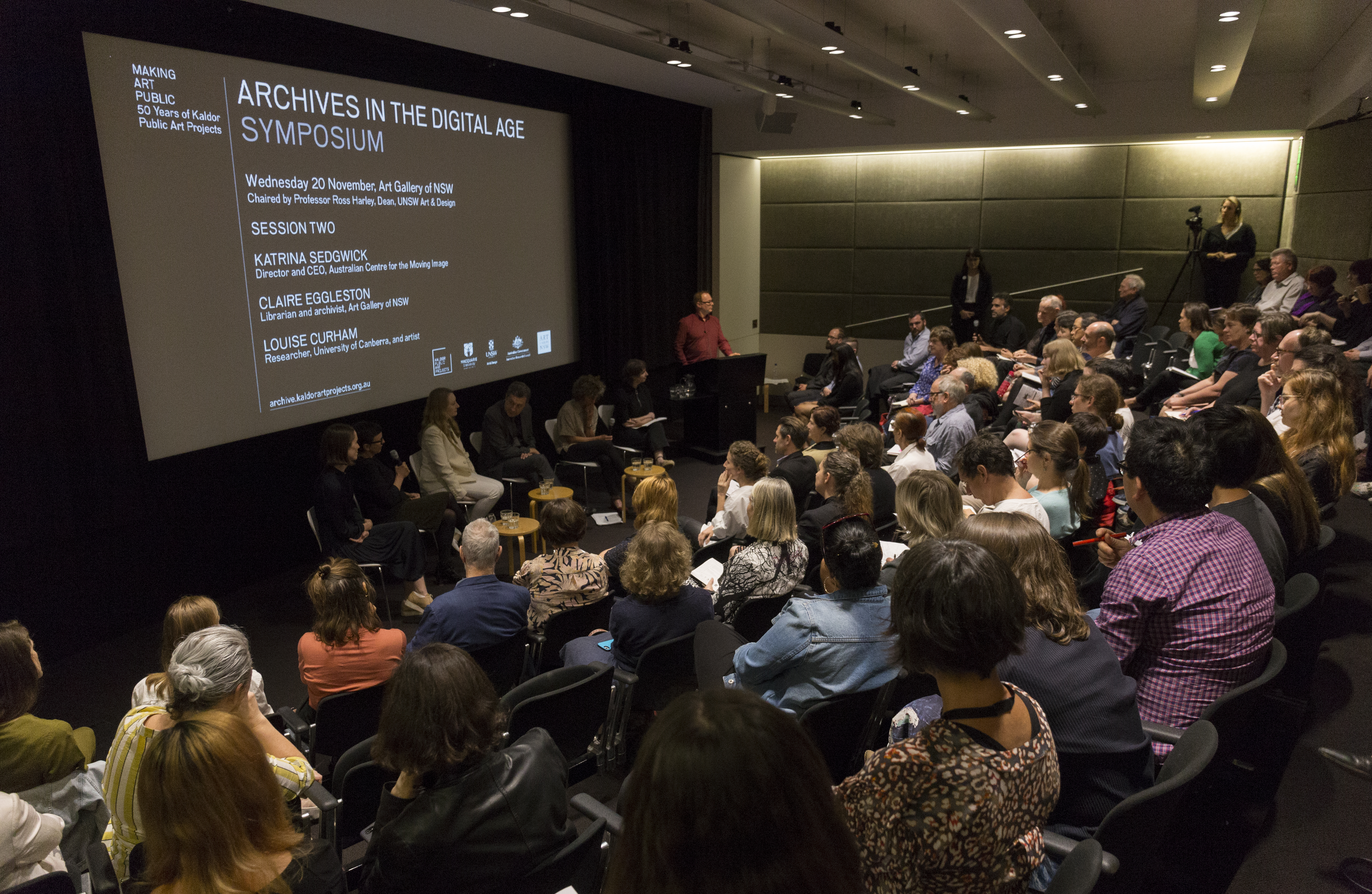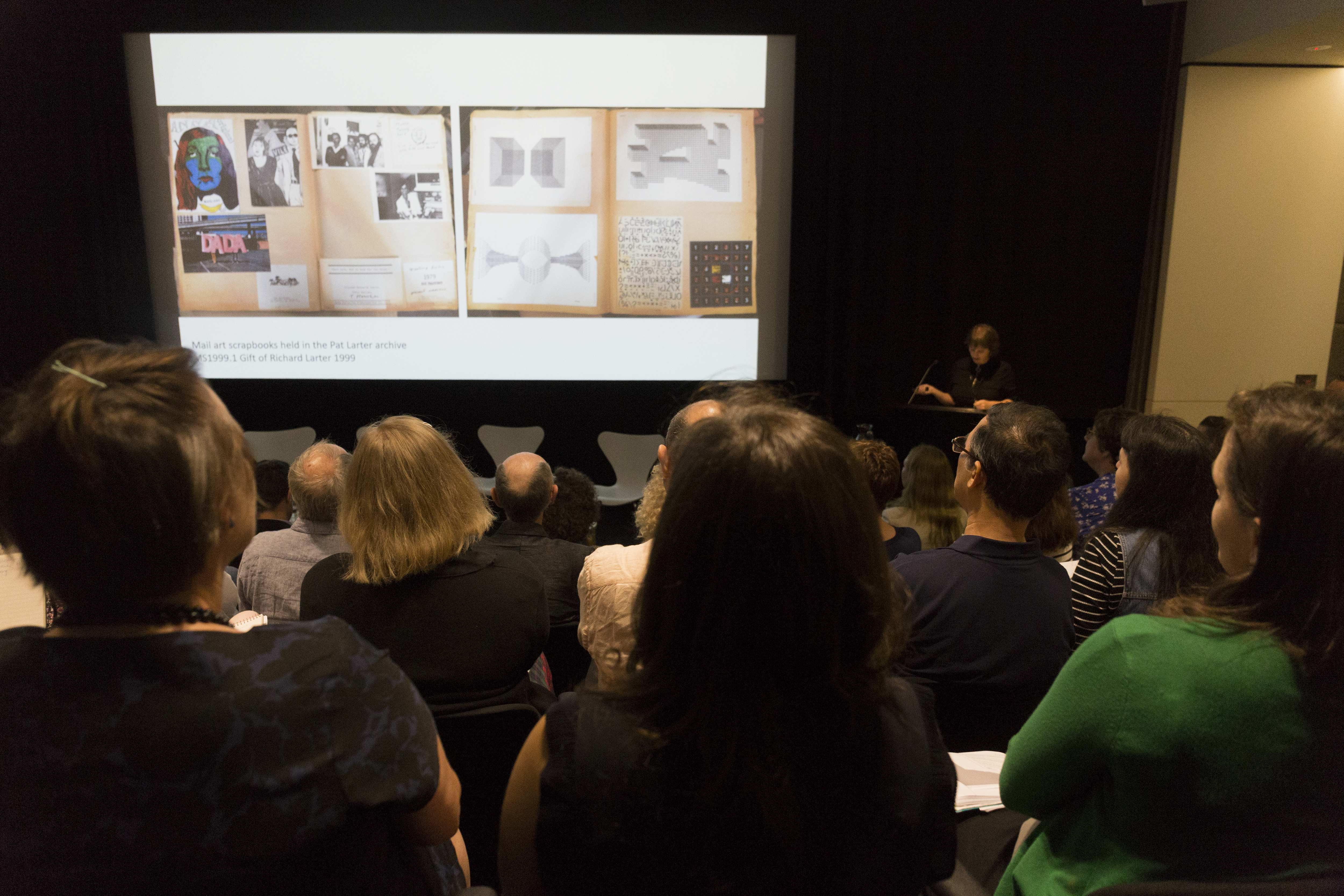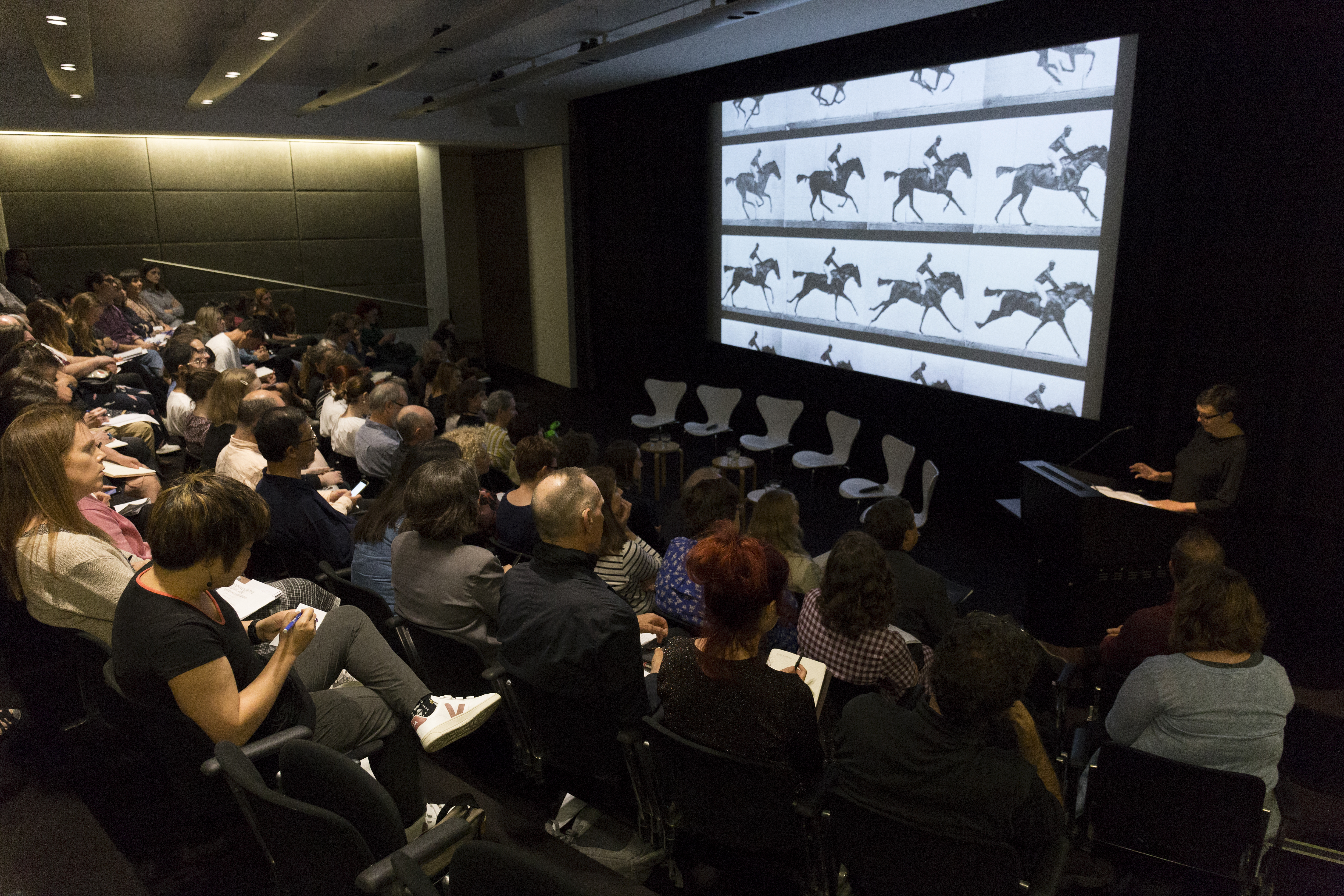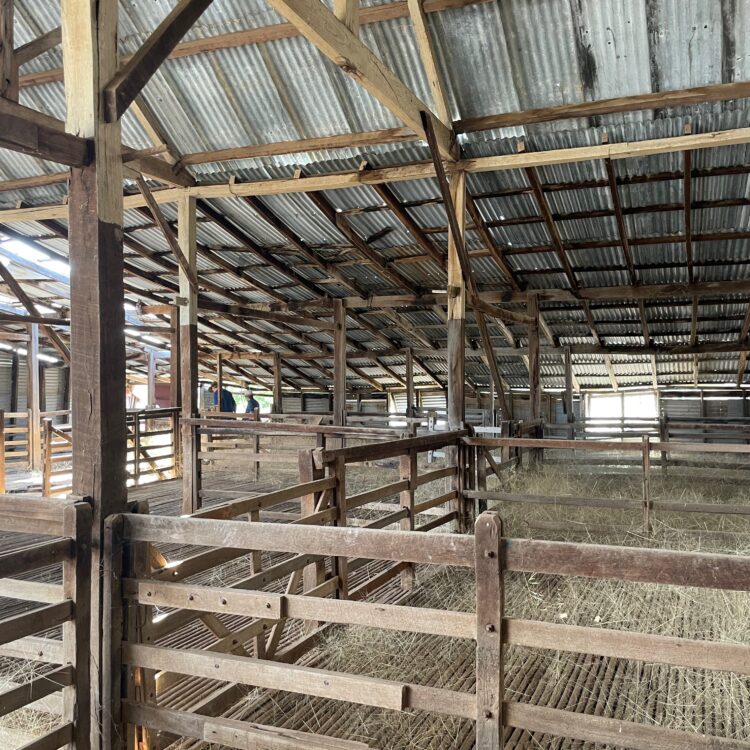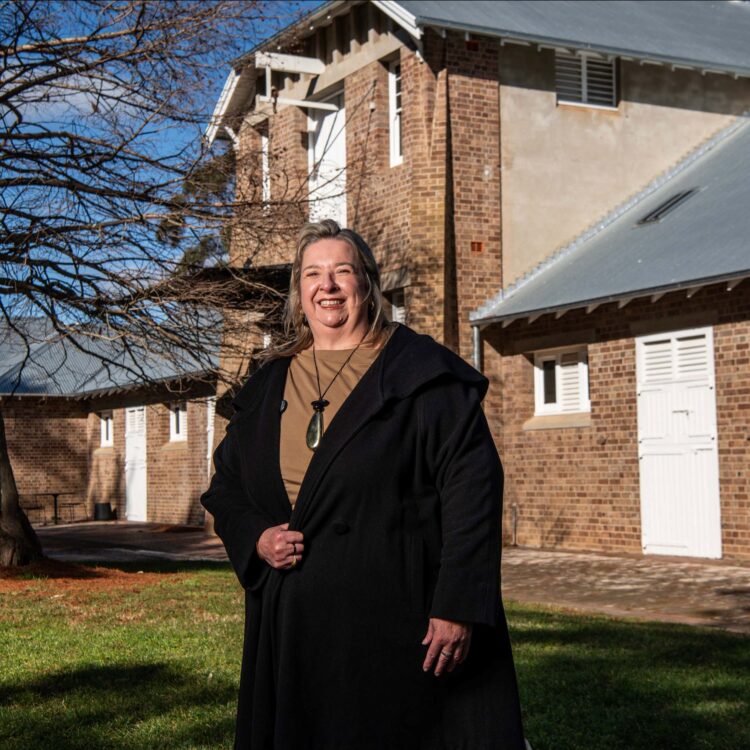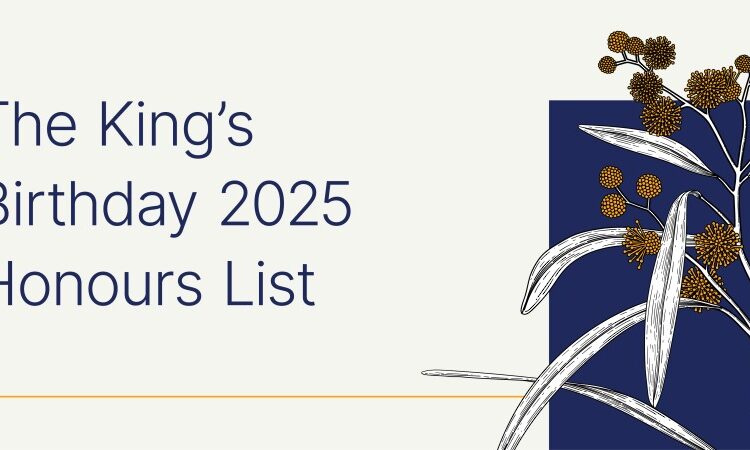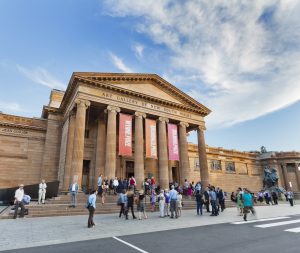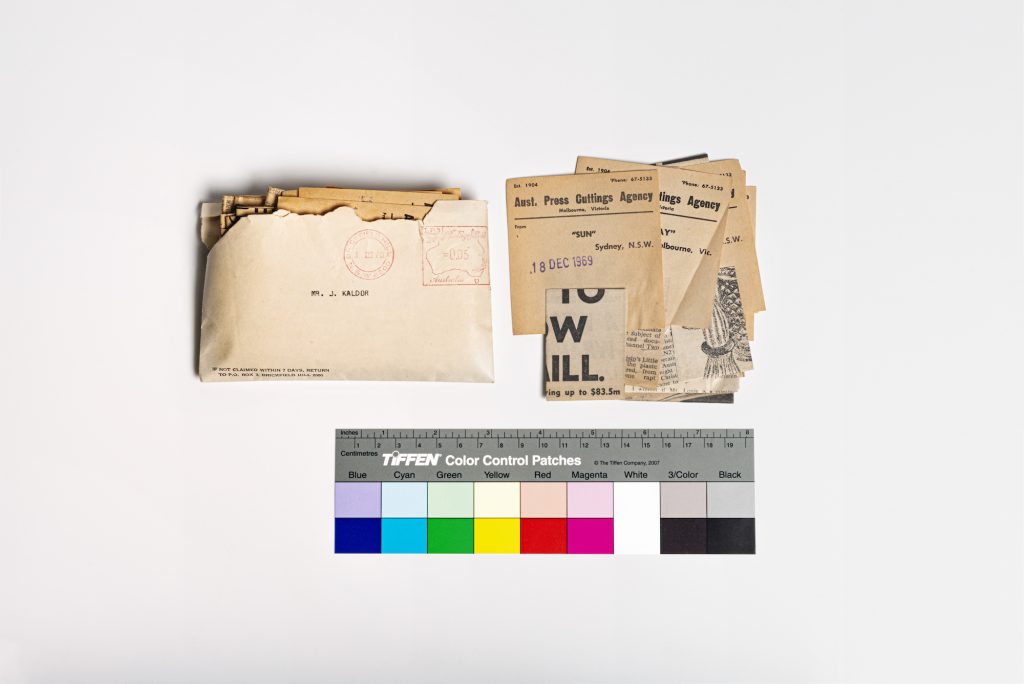
Kaldor Public Art Projects (KPAP) has taken its modus operandi of delivering contemporary art to the masses to the next level, announcing its new Digital Archive. The site includes over 18,000 digitised A4 pages spanning correspondence, logistics, negotiations, planning documents and reviews produced over the past 50 years. Miscellany such as posters, maps, charts, artworks and tshirts are also included on the site, providing a robust resource for researchers and curious members of the public alike.
The Digital Archive was launched with a half-day symposium at the Art Gallery of NSW, which is currently exhibiting the retrospective Making art public: 50 years of the Kaldor Public Art Projects. The event, entitled Archives in the Digital Age, included talks by John Potts (Professor of Media, Macquarie University); Alice Desmond (Archive Collection Curator, Kaldor Pubic Art Projects); Nicole Anderson (Professor, Cultural Studies, Macquarie University); Katrina Sedgwick (Director & CEO, Australian Centre for the Moving Image); Claire Eggleston (Librarian and archivist, Art Gallery of NSW); and Louise Curham (Researcher, University of Canberra and artist), mediated by Professor Ross Harley (Dean of the Faculty of Art & Design and UNSW Chair of Arts and Culture).
The various potentials and challenges of the digital archive medium were discussed at length in the symposium. Archives are seen as the verbal and visual foundation from which history is written; they are the repository of knowledge and preserver of history, values and collective cultural memories. As Louise Curham expressed: “pressing save is a letter to the future.”
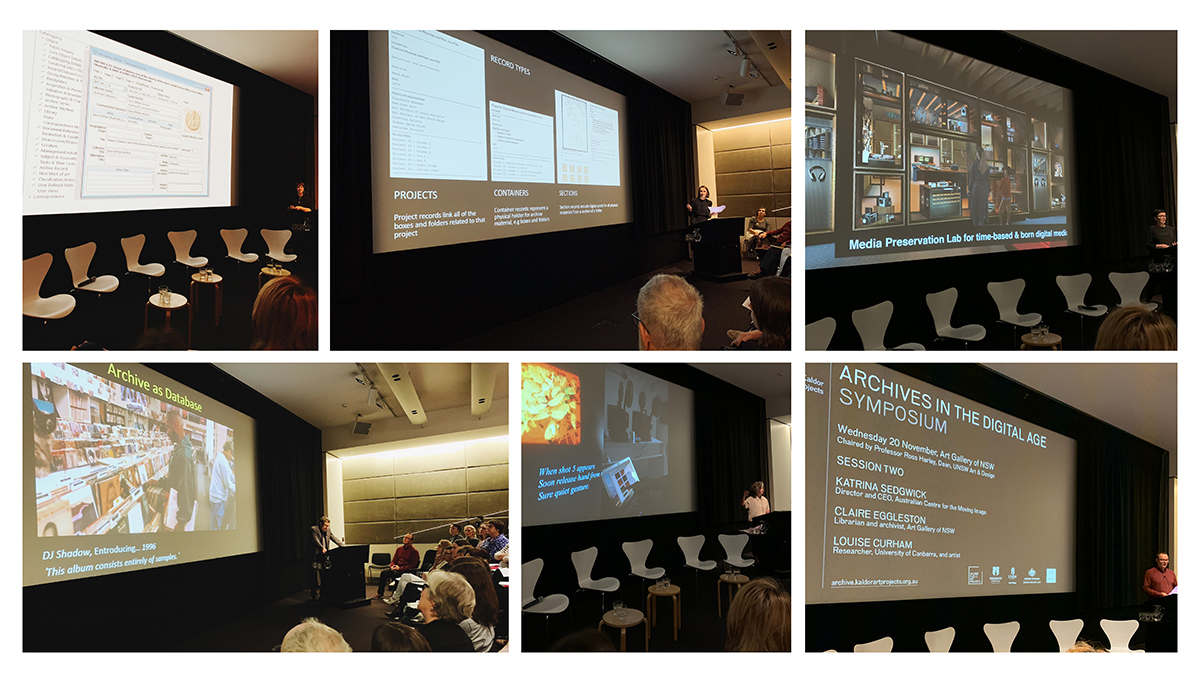
However, archives are also problematic – the act of choosing what is said or unsaid, recorded or not recorded is inherently political, enacted by those in a position of power. As one member of the audience queried, does the act of digitising archives re-enact this political task (or ‘violence’, as Nicole Anderson proposed in her talk Hauntology: The Archives as Past and Future)? These issues are particularly germane as we navigate the current “Archive Fever” that digitisation has borne.
Making the KPAP Archives digital has abundantly increased its accessibility, and was made possible through an ARC Linkage Project grant of $110,986 (received in partnership with Macquarie University and the University of NSW). As John Potts described, a research students trying to access the KPAP Archives would have previously been required to correspond with staff, organise time to visit the Lilyfieldoffices, locate the correct archive box (of which there were 77) and physically sort through the documents by hand under time constraints. This entire process can now be done instantaneously through the KPAP Digital Archive website, which is hosted through CollectiveAccess software.
View the KPAP Digital Archive here: archive.kaldorartprojects.org.au

